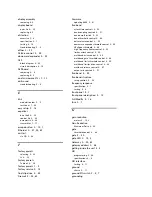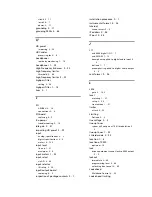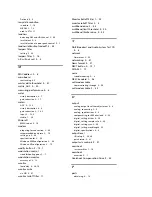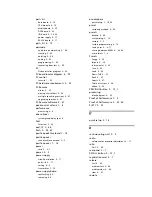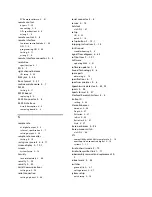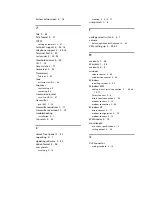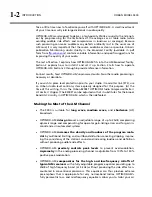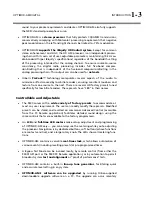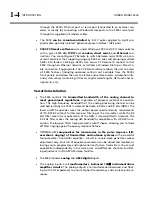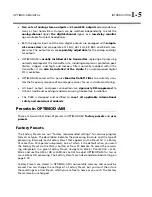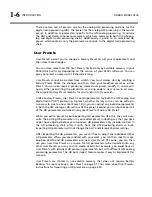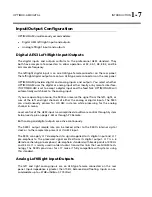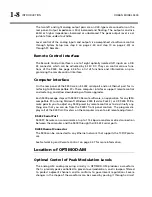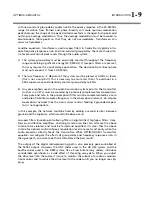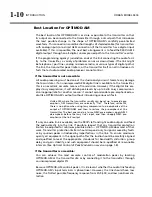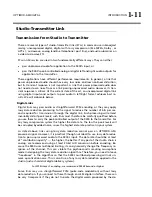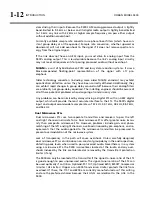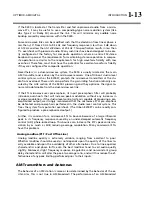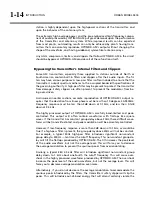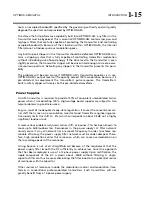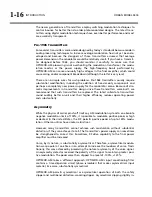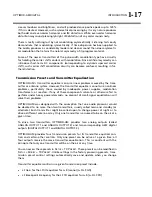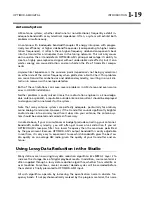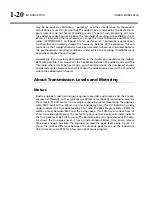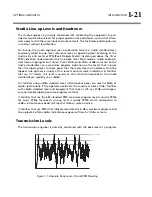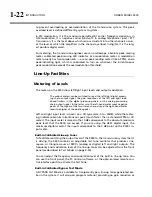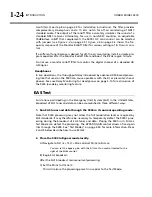
OPTIMOD-AM DIGITAL
INTRODUCTION
1-9
with non-constant group delay and/or non-flat frequency response in the 30-9500Hz
range. Deviation from flatness and phase-linearity will cause spurious modulation
peaks because the shape of the peak-limited waveform is changed. Such peaks add
nothing to average modulation. Thus, the average modulation must be lowered to
accommodate those peaks so that they do not overmodulate. Transformers can
cause such problems.
Landline equalizers, transformers, and low-pass filters in transmitters typically intro-
duce frequency response errors and non-constant group delay. There are three crite-
ria for preservation of peak levels through the audio system:
1)
The system group delay must be essentially constant throughout the frequency
range containing significant energy (30-9,500Hz). If low-pass filters are present,
this may require the use of delay equalization. The deviation from linear-phase
must not exceed
1
from 30-9,500Hz.
2)
The low-frequency
3 dB point of the system must be placed at 0.15Hz or lower
(this is not a misprint!). This is necessary to ensure less than 1% overshoot in a
50Hz square wave and essentially constant group delay to 30Hz.
3)
Any pre-emphasis used in the audio transmission system prior to the transmitter
(such as in an STL) must be canceled by a precisely complementary de-emphasis:
Every pole and zero in the pre-emphasis filter must be complemented by a zero
and pole of identical complex frequency in the de-emphasis network. An all-pole
de-emphasis network (like the classic series resistor feeding a grounded capaci-
tor) is not appropriate.
In this example, the network could be fixed by adding a second resistor between
ground and the capacitor, which would introduce a zero.
Low-pass filters (including anti-aliasing filters in digital links), high-pass filters, trans-
formers, distribution amplifiers, and long transmission lines can all cause the above
criteria to be violated, and must be tested and qualified. It is clear that the above
criteria for optimal control of peak modulation levels are met most easily when the
audio processor directly feeds the transmitter. While OPTIMOD-AM’s transmitter
equalizer can mitigate the effects of group delay and frequency response errors in
the signal path, an accurate path will still achieve the best results.
The output of the digital radio-processing path is also precisely peak-controlled at
the 9400’s output. However, the HDC codec used in the HD AM system and the
aacPlus codec used in the DRM system, like all low bitrate lossy codecs, introduce
considerable overshoots as a side effect of throwing away data. When you adjust
the drive level into the codec, it is wise to monitor the output of a radio or modula-
tion monitor and to reduce the drive level to the codec until you no longer see clip-
ping.
Summary of Contents for Optimod-AM 9400
Page 1: ...Operating Manual OPTIMOD AM 9400 Digital Audio Processor Version 1 2 Software...
Page 7: ...Operating Manual OPTIMOD AM 9400 Digital Audio Processor Version 1 2 Software...
Page 52: ......
Page 204: ......
Page 232: ......
Page 260: ......
Page 261: ...OPTIMOD AM DIGITAL TECHNICAL DATA 6 29...
Page 267: ...OPTIMOD AM DIGITAL TECHNICAL DATA 6 35 CPU Module...
Page 273: ...OPTIMOD AM DIGITAL TECHNICAL DATA 6 41 RS232 BOARD PARTS LOCATOR...
Page 275: ...OPTIMOD AM DIGITAL TECHNICAL DATA 6 43 8300 POWER SUPPLY PARTS LOCATOR...
Page 284: ...6 52 TECHNICAL DATA ORBAN MODEL 9400 DSP BOARD PARTS LOCATOR DRAWING 32170 000 14...
Page 292: ...6 60 TECHNICAL DATA ORBAN MODEL 9400 DISPLAY BOARD PARTS LOCATOR...
Page 293: ...OPTIMOD AM DIGITAL TECHNICAL DATA 6 61 DISPLAY BOARD...

